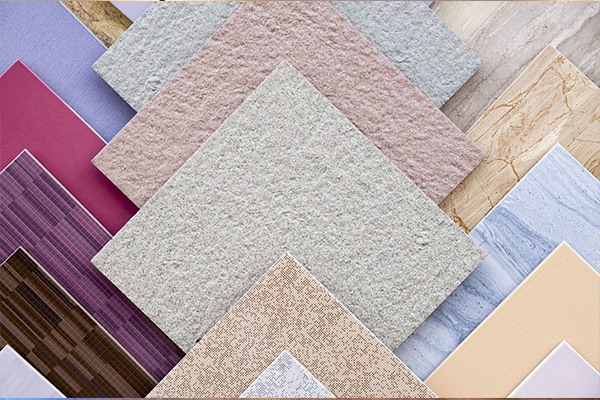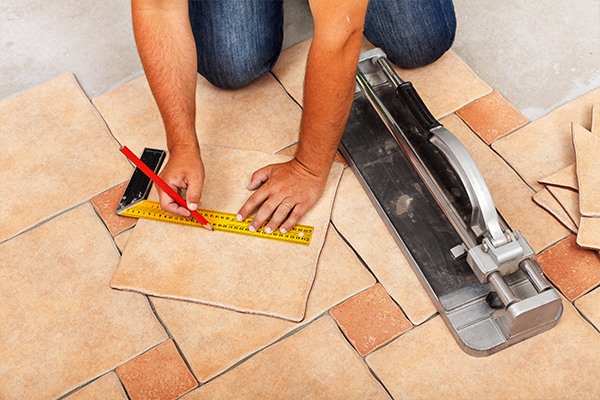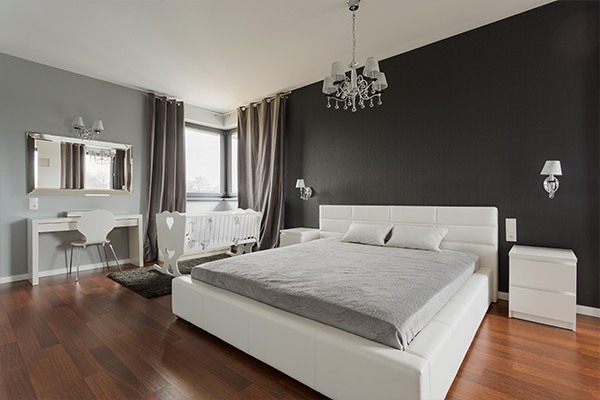Choosing a suitable flooring for your home can be quite a daunting task since your home’s floor is something that’s used throughout the day. There used to be a time when walking into any house and looking at the tiles could determine the age of the building. Homeowners today have become more informed and are trying to give a different look to different rooms just by varying the tiles used for flooring. Although the choices are many, so too are the questions that make choosing the perfect tile for bathrooms, kitchen, floors, walls and other spaces, difficult.
What are tiles?
A tile is made by mixing natural raw materials such as sand, clay, marble, onyx, granite or slate etc. This mixture is first worked into the desired shape and then fired at a high temperature, depending on its type and composition. For all purposes, three kinds of tiles are most commonly available:
Ceramic Tiles: The most popular of all tiles and available in various eye-catching designs, ceramic tiles come in glazed, glossy and matte finishes. These are considerably less expensive as compared to other types of tiles and are used in areas where there is less movement required, such as on walls and in bedrooms.
Porcelain Tiles: Porcelain tiles are the stronger and vitrified version of ceramic tiles. These are preferred by customers as the water absorption rate of these is less than 0.5%. Due to this property, porcelain tiles become a natural choice for kitchens and bathrooms.
Vitrified Tiles: These types of tiles are part porcelain and part ceramic in composition but are subjected to different heating processes. Vitrified tiles have a protective layer of glass which makes them more durable and stronger than all other varieties. These are mostly used in spaces that have higher and frequent movement such as living rooms, kitchens, and corridors.
Sizing it up
Tiles come in a variety of sizes, with popular floor tile sizes being 800×800 mm, 610×610 mm, 600×600 mm, and 300×600 mm. Wall tiles come in sizes such as 300x450mm, 250x350mm, and 300x600mm.
It is best advised to match tiles to the room size, and experts say that bigger tiles give an illusion of space. While choosing tiles, it is essential to pick a tile size that entails very little cutting, unless mosaics are used. This is to ensure higher tile strength and lesser wastage.
Wall and floor tiles
The strength of a tile is determined based on the number of times it is fired up. Wall tiles are more porous and have a higher capacity to absorb water. However, wall tiles are less stable in comparison to floor tiles, which absorb less water and are more durable.
Before picking tiles for your home, it is essential to think about the functionality of a room. Ensure that the tensile and abrasive strengths of the tiles are defined so as to be scratch-resistant and unbreakable. Tiles must also have the innate ability to withstand UV rays, especially when used on outdoor walls. Check the water absorption rate and maintenance value so as to avoid regular polishes and maintenance.
- Exteriors and bathroom: Bathroom, balcony, lobby, porch, patio and other areas are best done with natural stone finishes that are available in various sizes, colors, and shapes. The tiles need to be anti-skid since these are typically wet spaces.
- Kitchen: More than the aesthetic value, it is essential for kitchen tiles to remain clean and dry. Opt for a clean look with glazed tiles. The walls can have porcelain or ceramic tiles, while anti-skid tiles are best for the floors, leaving the space stain and odor free.
- Drawing room: Dining and drawing rooms are spaces used frequently and must have abrasive-resistant tiles. These tiles ought to have designs, surfaces, and colors that won’t fade for a long time.
- Bedroom: Make this space look warm and inviting by using natural stone and wooden finish tiles. A modern trend is to utilize tiles emulating natural aspects of stone and wood.
Tiles can be easily maintained using soap water and soft cloth since they have a self-cleaning properties. Using harsh products or acid frequently isn’t recommended since regular use of these may result in loss of shine and texture of tiles.






